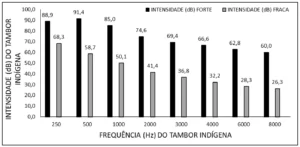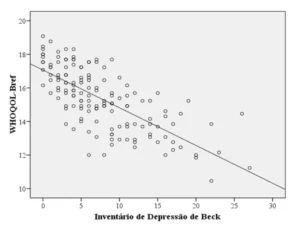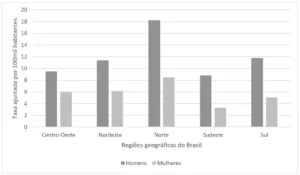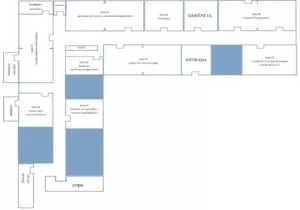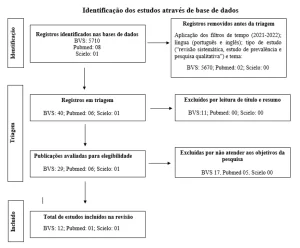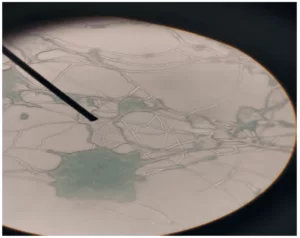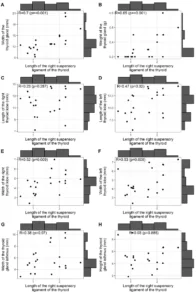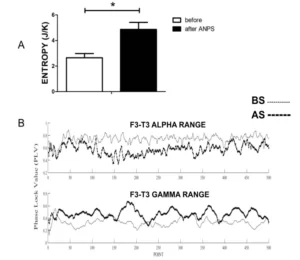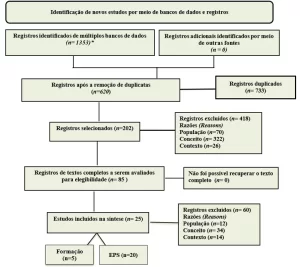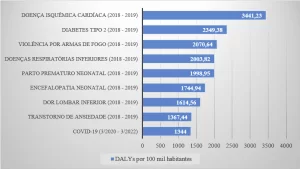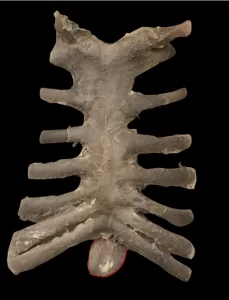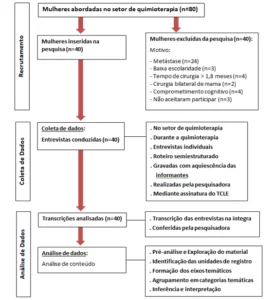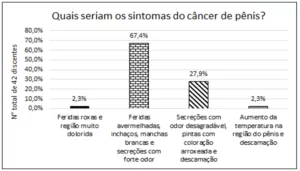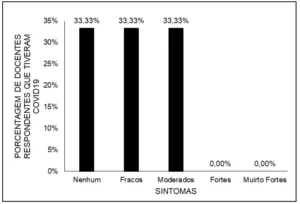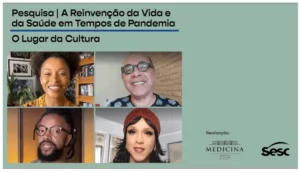REVIEW ARTICLE
CRUZ NETO, Manoel Samuel [1], NEGRÃO, Renata de Jesus da Silva [2], RAMALHO, Jully Grace Freitas de Paula [3], CORDOVIL, Darciane Coelho [4], PANZETTI, Tatiana Menezes Noronha [5], FECURY, Amanda Alves [6], DENDASCK, Carla Viana [7], DIAS, Cláudio Alberto Gellis de Mattos [8], MOREIRA, Elisângela Claudia de Medeiros [9], SOUZA, Keulle Oliveira da [10], SILVA, Gleicy Trindade [11], CUNHA, Glenda Fonseca [12], PINHEIRO, Shirlei Sueli Frias dos Santos [13], OLIVEIRA, Euzébio de [14]
CRUZ NETO, Manoel Samuel. et al. The systematization of nursing care to patients who are potential corneal donors: an integrative literature review. Revista Científica Multidisciplinar Núcleo do Conhecimento. Year. 07, Ed. 03, Vol. 04, pp. 101-113. March 2022. ISSN: 2448-0959, Access link: https://www.nucleodoconhecimento.com.br/health/corneal-donors, DOI: 10.32749/nucleodoconhecimento.com.br/health/corneal-donors
ABSTRACT
Introduction: Corneal transplantation is a surgery that consists of replacing a portion of the diseased cornea of a patient with a healthy cornea, in order to improve vision or correct ocular perforations. With the advancement of studies, resuscitation and life support techniques, brain activity came to define the life and death of the individual, thus linking death to neurological criteria. The care of patients with brain death, potential corneal donors, is characterized as a complex activity, implemented by the multidisciplinary team that works in an adult intensive care unit with the systematization of nursing care in the workplace the nurse ensures that the quality of care will be permanent. Objective: Application of the systematization of nursing care, according to the NANDA taxonomy, in a patient with brain death, for the preservation of the cornea of this potential donor. Method: This is an Integrative Literature Review. For data collection, three moments were used: checking the keywords, obtaining the sample and synthesizing the data. Results and discussion: 12 articles contributed positively to the research for the results and discussions, presenting subjects such as: Loss of the potential donor due to care maintenance and the need for systematization in nursing care; Strategy for early diagnosis of brain death and the importance of a commission for assistance support. After reading and identifying categories emerged in the research, the conditions that evidence organ and tissue donations were satisfactorily shown. Conclusion: It was possible to identify the absence of protocols for the systematization of nursing care in the Intensive Care Unit, and as a consequence the decrease in corneal transplants, evidenced by the absence of early strategies for the diagnosis of brain death.
Keywords: Brain Death, Hospital Care, Cornea, Organ and tissue donation.
1. INTRODUCTION
Organ and tissue transplantation is a process that begins with the donation of a part of the human body, being a safe and effective therapeutic alternative in the treatment of several diseases that cause insufficiency or failure of some organs or tissues, determining improvement in the quality of life people’s lives and may increase the survival of patients who receive the transplanted organ. To start the transplant it is necessary to have the whole process clarified, mainly between health professionals and the patient’s family, because without the family’s authorization the transplant can be canceled (LIMA; BATISTA; BARBOSA, 2013).
With the advancement of studies, resuscitation and life support techniques, brain activity came to define the life and death of the individual, thus linking death to neurological criteria, evolving into what we currently know as Brain Death (BD) (GUETTI ; MARQUES, 2008).
In 1991, the Federal Council of Medicine (FCM) regulated the diagnosis of brain death, which defined it as an irreversible situation of all respiratory and circulatory functions or cessation of all brain functions, including the brainstem (CAVALCANTE; et al., 2014).
The nurse’s role is to request authorization from the patient’s legal guardian through an Term of Free and Informed Consent (TCLE)[15], guaranteeing the right to discuss the organ donation with the family and ensure that the donation process can be suspended at anytime. It is also necessary to provide assistance to corneal receptors, applying the Systematization of Nursing Care (SAE)[16], in the pre and post organ harvesting periods, in view of this, the role of the nurse is of paramount importance, where he participates in all processes of corneal donation, from its approach with the family to the maintenance of the harvestable tissue.
When talking about the systematization of nursing care in patients who are potential corneal donors, the importance of nurses is indispensable, as they participate in the entire process, starting from family consent to maintaining the tissue collected. Corneal harvesting is a complex procedure for both parties (donor and recipient). There are qualifying conditions for transplantation and the nurse is the qualified professional to meet them. It is observed that, despite the hospital technological advance, it does not replace the systematization of nursing care and its importance to consolidate the necessary stages. It is imperative that nursing professionals are constantly updated, which will give them subsidies for greater care in handling the cornea (FACESA, 2019).
Corneal transplantation is the most successful procedure among transplants and has been the most performed today, despite the resistance of the patient’s family members at the time of releasing the transplant. The cornea donation process is based on the identification of the potential donor through notification and active search. Every patient who dies between 2 and 80 years of age is a potential donor (NOGUEIRA, 2019).
In the hospital environment, the Intensive Care Units (ICU) are seen by patients’ families as a worrying sector, it is a high-tech place where patients currently need intensive care. This concern negatively influences the understanding of the importance of organ donation from one patient to another. The professional needs to clarify this need for the family members, that their loved one can save other lives, in addition, he needs to be clear and convincing so that the family, even going through the stages of mourning, can contribute to the process of organ harvesting, in addition to ensure adequate nursing care using the nursing diagnoses of the NANDA taxonomy (CAVALCANTE; et al., 2014).
Therefore, the purpose of this study was to present an analysis in the scientific literature on the application of the systematization of nursing care, according to the NANDA taxonomy, in patients with brain death, for the preservation of the cornea of this potential donor, as well as to verify the main nursing interventions worked in the care of corneal donor patients.
2. METHOD
This is an Integrative Literature Review (ILR), the following inclusion criteria were adopted for the research: free articles, theses and dissertations published in Portuguese, English and Spanish, which were available in full in the databases, Coordination for the Improvement of Higher Education Personnel (CAPES)[17], Scientific Electronic Library (SCIELO), PUBMED and Biblioteca Virtual em Saúde (BVS Brasil), which portray the definitive theme, and published between the years 2014 to April 2020.
For the data collection procedure, a semi-structured instrument was created, which contains: title, journal area, year of publication, study objective, nursing diagnosis and domain in the NANDA Taxonomy (APPENDIX A), through which a search was carried out exploratory and selective analysis of articles and theses.
The process of searching for literary productions took place in the following steps:
STEP 1: Checking the keywords
Using the keywords found in relation to the research topic in Health Science Descriptors (DeCS)[18]: Cornea, Hospital Care, Brain Death Tissue, Organ, Procurement.
STEP 2: Obtaining the sample
The search was carried out using the Boolean operators “AND” and “OR” to reach the largest available number of articles on the subject in the databases, shown in table 01 and in step 03.
STEP 3: Data synthesis
The first selection of articles and theses was carried out by reading the titles seeking the relationship with the theme of the work. Synthesizing 12 articles as a positive search result. The second selection was carried out by reading the abstracts, comparing them with the objectives of the work and the guiding question of the research.
The data analysis method is based on Bardin’s Theory, which has three main phases: pre-analysis, material exploration and treatment of results, inference and interpretation (BARDIN, 2016).
dos resultados, a inferência e a interpretação (BARDIN, 2016).
3. RESULTS
The results of this step are shown in Table 1 and Table 2:
Table 1: Publications available from 2014 to 2020, according to descriptors and databases
| (DECS) Bases of Data |
Brain Death OR Tissue AND Organ Procurement |
Brain Death AND Cornea |
Brain Death AND Hospital Care |
Cornea OR Tissue Organ Procurement |
TOTAL |
| SCIELO | 02 | 01 | 01 | 01 | 05 |
| BVS BRASIL | 01 | 01 | 0 | 0 | 02 |
| PUBMED | 07 | 02 | 0 | 0 | 09 |
| CAPES | 0 | 01 | 03 | 13 | 17 |
| TOTAL | 10 | 05 | 04 | 14 | 33 |
Source: Own authorship, 2021.
In this way, 33 works served as the object of analysis at first, then the reading of titles and abstracts.
In the second table, the presentation of the 12 articles that have affinity with the object of study and research, identified by reading the titles and abstracts. Thus, from the groupings of descriptors found in the databases.
Table 02: Publications available from 2014 to 2020
| Data base | Merge of descriptors | 1st selection result | 2nd selection result | Used |
| SCIELO | Brain death OR tissue organ procurement. Brain death AND cornea. Hospital care AND cornea. Cornea OR Tissue organ procurement. |
6.893 | 05 | 02 |
| BVS BRASIL | Brain death ORtissueorganprocurement. Brain death AND cornea. Hospital care AND cornea. Cornea OR Tissueorganprocurement. |
23.566 | 02 | 02 |
| PUBMED | Brain death OR tissue organ procurement. Brain death AND cornea. Hospital care AND cornea. Cornea OR Tissue organ procurement. |
3.137 | 05 | 05 |
| CAPES | Brain death OR tissue organ procurement. Brain death AND cornea. Hospital care AND cornea. Cornea OR Tissue organ procurement. |
17 | 0 | 0 |
| Total | 04 | 33.612 | 12 | 12 |
Source: Own authorship, 2021.
The survey of the productions, it was possible to identify that the distribution of the studies happened heterogeneously, there was a significant difference in the number of articles found between the years 2014 to 2020, thus, 12 articles distributed between the years:
- 2014 (01).
- 2015 (01).
- 2016 (02).
- 2017 (00).
- 2018 (01).
- 2019 (05).
- 2020 (02).
4. DISCUSSION
Early diagnosis of BD is essential to ensure the quality of the transplant, the computerized alert strategy has demonstrated its effectiveness and support, but it is still necessary to increase the available tissue from corneal donors.
The Intra-Hospital Commission for Organ and Tissue Donation for Transplants (CIHDOTT)[19] is the commission responsible for making transplants viable within institutions, a coordinator is needed in the team to plan measures that will increase the number of donors and optimize the confrontation regarding family rejection. For a better understanding of the articles and their similarities, they were grouped into categories that are: I- Loss of the potential donor due to care maintenance and the need to systematize SAE nursing care; II- Knowledge about organ donation; III- Strategies for early diagnosis of brain death and IV- Importance of a commission to support care.
5. LOSS OF POTENTIAL DONOR DUE TO ASSISTANCE MAINTENANCE AND NEED OF SAE
The first category addressed was the loss of the potential donor due to care maintenance and the need to apply the systematization of nursing care in relation to patients with brain death characterized as the performance of the multidisciplinary team that works in the hospital environment, highlighting If the fundamental role of the responsible nurse is to keep the direct care of the potential cornea donor safe, one of the points that is necessary is the management of hemodynamic monitoring with individualized care, since the temperature of the human body needs to be normothermic, that is, afebrile ( without fever) for the success of the transplant to be performed (FREITAS et al., 2018).
For the uptake to occur, it is necessary to take care with the systematization of nursing care, the nurse includes care interventions in the nursing prescriptions aimed at the nursing team that is directly in the care of the potential cornea donor patient, one of the interventions is to maintain the dimly lit environment and deposit gauze moistened with saline solution to moisten the eyeball. The role of the nurse in conjunction with the SAE is of paramount importance and needs to be implemented in a standardized way within an intensive care unit, so the nurse will easily promote this organ prevention before transplantation (COSTA; COSTA; AGUIAR, 2016).
The adequacy of the clinical and laboratory evaluation of the potential donor is essential to obtain organs and tissues in favorable conditions for transplantation, thus avoiding the possibility of transmission of infection to the potential corneal donor at the time of collection.
Another important factor to be observed is the family’s refusal to accept the diagnosis of brain death and the lack of qualified professionals is insufficient for quality assistance educational campaigns aimed at the general society in order to clarify the entire organ donation process and encourage the population to consent (FREITAS et al., 2018).
6. KNOWLEDGE ABOUT ORGAN DONATION
Knowledge about organ donation, when the multidisciplinary team and the potential donor’s family are approached, care is taken in speech and in the bond that will be created at that moment, as the non-acceptance of family members can make the process difficult, the family is in a phase in mourning and this can influence the collaboration of the organ donation, the professional needs to be cautious and take preventive measures before approaching the family that is fragile with the loved one in death.
The fragility of the population’s knowledge, pointed out as one of the causes for not performing organ donation, is related to the non-acceptance of family members, mainly in cultural and religious matters, where the health professional will apply professional ethics respecting the family moment. Brain death is multiple organ failure, due to endocrine, metabolic and hemodynamic changes of the potential donor, where the professional will explain to the family in an educational and clear way that the patient will no longer have success in recovery, respecting all the stages of grief that the family is experiencing, in order to convince them to sign the opening protocol for the organ and tissue donation process (ARAÚJO et al., 2016).
Knowledge comes from both sides, society on the one hand and health professionals on the other, it is necessary that both have a broad knowledge about organ donation, both scientific and experiential, the health professional who has little knowledge scientist will not have enough arguments to convince the donor’s family and, on the other hand, if the family has not come into contact with the situation or is entering for the first time, it is necessary to be positively prepared as a qualified and complete professional to achieve success (FREITAS et al., 2018).
7. STRATEGY FOR EARLY DIAGNOSIS OF BRAIN DEATH
The early diagnosis strategy for brain death comes in as the third category. Among the techniques for early diagnosis of BD are, checking the sedation time for each CNS depressant drug, according to the existing protocol of brain death, then informing the family about the opening schedule of the BD protocol, performing clinical examinations. Bearing in mind that each health professional provides specific or routine assistance to the patient, it is necessary that the intensive care units have specific standard operating procedures for opening the protocol to patients diagnosed with brain death and that the systematization of the nursing care comes together, in order to guarantee a promotion to the patient as a potential cornea donor, enabling a safe cornea donation (ARAÚJO et al., 2016).
The early strategy aims to ensure that the potential donor patient does not get lost in the path of screening until the day of organ harvesting, all professionals need to be qualified and properly trained to better execute the process. Therefore, the strategy can be in the form of printed matter or workflow training in order to keep the patient as a strong candidate for organ and tissue donation (CASTRO et al., 2018).
8. THE IMPORTANCE OF THE COMMISSION FOR ASSISTANCE SUPPORT
Finally, the fourth category highlights the importance of a commission implemented in the hospital to support the professional teams that work in the intensive care unit, today the intra-hospital commission for organ and tissue donation for transplants has its importance in the search and identification process of potential donors, so that the transplant occurs properly in a timely manner. Through the representations of observed studies, corneal injury has occupied little prominence in intensive care units, being evidenced from brain death. Regarding the nursing diagnosis of the risk of dry eye, among the 230 patients involved in the research, 122 had a global incidence of dry eye damaging the corneal tissue, that is, 53% during the study period, with an incidence of (0.184 cases of patient ) per day (5.51 patient cases per month) (ARAÚJO et al., 2016).
There is a significant need for a systematization of nursing care in patients who are potential corneal donors, which demonstrates the improvement in the care provided to the patient, practices that will guarantee the preservation of the cornea, in order to increase the number of transplants performed, as well as its effectiveness, through the systematization of nursing care and a computerized protocol that will facilitate the work of the care team (FREITAS et al., 2018).
Faced with the pain of losing family members, studies point to the lack of ability of the medical team to explain the context of the donation, in view of their doubts and the fear of their perception of thinking that their family member is still alive. In order for there to be effective communication and create a satisfactory bond between the professional team and the family, it is necessary to be transparent in relation to the subject addressed and humanized assistance throughout the process, in order to achieve the greater objective, which is the number of organ donations in our country.
In this sense, the commission seeks to qualify its services, develops continuing education among professional employees of the institution, guarantees an adequate family interview, trains professionals for this visit, creates routines to offer the relatives of deceased patients the possibility of donating organs and other tissues, provide the necessary inputs for the effective procurement of organs and tissues in the hospital (FREITAS et al., 2018).
9. FINAL CONSIDERATIONS
In this study, it can be noted the absence of the practice of systematization of nursing care in the ICU and, as a consequence, the decrease in corneal transplants due to the data presented in evidence, other factors are also visible in the research, such as the absence of strategies for the early diagnosis of BD, in order to guarantee the safety of the potential corneal donor until the day of the transplant.
The data found in the research results show the need for professional interaction with the process of brain death related to organ and tissue donation, mainly focused on the cornea, the loss of potential donor due to failure in body maintenance is related to the absence of the SAE, the lack of family knowledge related to mourning makes it impossible to capture the organ in a timely manner, the aid of the protocol for nursing diagnosis is non-existent in hospitals in the form of a protocol, delaying the possibility of opening the institutional process and the absence of the committee that supports and clarifies the process of organ donation to the multidisciplinary team is necessary for the process to end satisfactorily from start to finish.
The early recognition of risk factors for carrying out the nursing diagnosis of the NANDA Taxonomy, such as the risk of dry eye, risk of corneal injury and the risk of ocular dryness, consequently, the adoption of preventive measures, will certainly reduce the probability of ocular alterations in critically ill patients, enabling the donation of organs and tissues.
REFERENCES
ARAÚJO, Diego Dias de; ALMEIDA, Natália Gherardi; SILVA, Priscila Marinho Aleixo; RIBEIRO, Nayara Souza; WERLI-ALVARENGA, Andreza; CHIANCA, Tânia Couto Machado. Predição de risco e incidência de olho seco em pacientes críticos. Rev. Latino-Am. Enfermagem. v. 24; e. 2689. 2016. DOI: http://dx.doi.org/10.1590/1518-8345.0897.2689. Disponível em: https://www.scielo.br/pdf/rlae/v24/pt_0104-1169-rlae-24-02689.pdf. Acesso em: 11 jul. 2021.
BARDIN, Laurence. Análise de Conteúdo. Tradução: Luís Augusto Pinheiro. São Paulo: Edições 70, 2016. Disponível em: https://madmunifacs.files.wordpress.com/2016/09/anc3a1lise-do-contec3bado-apresentac3a7c3a3o.pdf. Acesso em: 10 jul. 2021.
CASTRO, Ângela Beatriz de. Conhecimento e atitude dos enfermeiros frente ao processo de doação de órgão. Dissertação (Mestrado). Universidade Federal do Espírito Santo, 2018. Disponível em: https://repositorio.ufes.br/bitstream/10/8320/1/tese_11804_Disserta%C3%A7%C3%A3o%20com%20restri%C3%A7%C3%A3o%20dos%20artigos.pdf. Acesso em: 11 jul. 2021.
CAVALCANTE, Layana de Paula; RAMOS, Islane Costa; ARAÚJO, Michell Ângelo Marques; et. al. Cuidados de enfermagem ao paciente em morte encefálica e potencial doador de órgãos. Acta Paul Enferm. 2014. Disponível em:http://www.scielo.br/pdf/ape/v27n6/1982-0194-ape-027-006-0567.pdf. Acesso em: 10 jul. 2021.
COSTA, Carlane Rodrigues; COSTA, Luana Pereira; AGUIAR, Nicoly. A enfermagem e o paciente em morte encefálica na UTI: Artigos de Pesquisas. Rev. bioét. (Impr.) v.24, n.2, p. 368-73. 2016;. Disponível em: http://www.scielo.br/pdf/bioet/v24n2/1983-8034-bioet-24-2-0368.pdf. Acesso em: 10 jul. 2021.
FACESA. Assistência de Enfermagem no Transplante de Córnea. Revista de Iniciação Científica e Extensão – REIcEn. Faculdade Sena Aires. 2019. Disponível em: http://twixar.me/sNRT. Acesso em: 10 jul. 2021.
FREITAS, Luana da Silva; FERREIRA, Marcia de Assunção; ALMEIDA FILHO, Antônio José de; et. al. Lesões na córnea em usuários sob os cuidados intensivos: contribuições à sistematização da assistência de enfermagem e segurança do paciente. Texto Contexto Enferm. v.27, n.4. 2018. Disponível em: https://www.scielo.br/pdf/tce/v27n4/0104-0707-tce-27-04-e4960017.pdf. Acesso em: 10 jul. 2021.
GUETTI, Nancy Ramos; MARQUES, Isaac Ramos. Assistência de enfermagem ao potencial doador de órgãos em morte encefálica. Rev. Bras Enferm. V. 61, n. 1, p. 91-7. Brasília: 2008 Disponível em: http://www.scielo.br/pdf/reben/v61n1/14.pdf. Acesso em: 12 jul. 2021.
LIMA, Camila Santos Pires; BATISTA Ana Cláudia de Oliveira; BARBOSA, Sayonara de Fátima Faria. Percepções da equipe de enfermagem no cuidado ao paciente em morte encefálica.Rev. Eletr. Enf. v.15, n.3, p.780-9, 2013. Disponível em: https://www.fen.ufg.br/fen_revista/v15/n3/pdf/v15n3a21.pdf. Acesso em: 12 jul. 2021
NOGUEIRA, Erismar Santos. SILVA, Erci Gaspar da. SANTOS, Walquiria Lene dos. Assistência de enfermagem no transplante de córnea. Revista InicCientExt, v. 2, n.2, p. 89-95, 2019.
APPENDIX – FOOTNOTE
15. Termo de Consentimento Livre e Esclarecido (TCLE).
16. Sistematização da Assistência de Enfermagem (SAE).
17. Coordenação de Aperfeiçoamento de Pessoal de Nível Superior (CAPES).
18. Descritores em Ciência da Saúde (DeCS).
19. Comissão Intra-hospitalar de Doação de Órgãos e Tecidos para Transplantes (CIHDOTT).
[1] Nurse, Master in Nursing, Professor at Centro Universitário FIBRA, Brazil.
[2] Nurse, Master in Nursing, Professor at Centro Universitário FIBRA, Brazil.
[3] Nurse, Master in Nursing, Professor at the Universidade do Estado do Pará, Brazil.
[4] Nurse, Master in Surveillance and Epidemiology, Professor at Centro Universitário FIBRA, Brazil.
[5] Nurse, Master in Nursing, Professor at Centro Universitário FIBRA, Brazil.
[6] Biomedical, PhD in Tropical Diseases. Professor and Researcher at the Universidade Federal do Amapá, Brazil.
[7] PhD in Psychology and Clinical Psychoanalysis. Ongoing PhD in Communication and Semiotics at the Pontifícia Universidade Católica de São Paulo (PUC/SP) . Master’s Degree in Religious Sciences from Universidade Presbiteriana Mackenzie. Master in Clinical Psychoanalysis. Degree in Biological Sciences. Degree in Theology. He has been working with Scientific Methodology (Research Method) for more than 15 years in the Guidance of Scientific Production of Master’s and Doctoral Students. Specialist in Market Research and Health Research. ORCID: 0000-0003-2952-4337.
[8] Biologist, PhD in Theory and Research of Behavior. Professor and Researcher at the Instituto Federal do Amapá – IFAP.
[9] Psychologist, PhD in Tropical Diseases, Professor at the Universidade do Estado do Pará. Belem (PA), Brazil.
[10] Master in Anthropogenic Studies in the Amazon (PPGEAA/UFPA) and Researcher at the Grupo de Pesquisa em Saúde, Sociedade e Ambiente (GPSSA/UFPA).
[11] Nursing student, Centro Universitário FIBRA, Brazil.
[12] Nursing student, Centro Universitário FIBRA, Brazil.
[13] Nursing student, Centro Universitário FIBRA, Brazil.
[14] Biologist. PhD in Medicine / Tropical Diseases. Professor and Researcher at the Universidade Federal de Pará, Brazil.
Submitted: March, 2022.
Approved: March, 2022.

